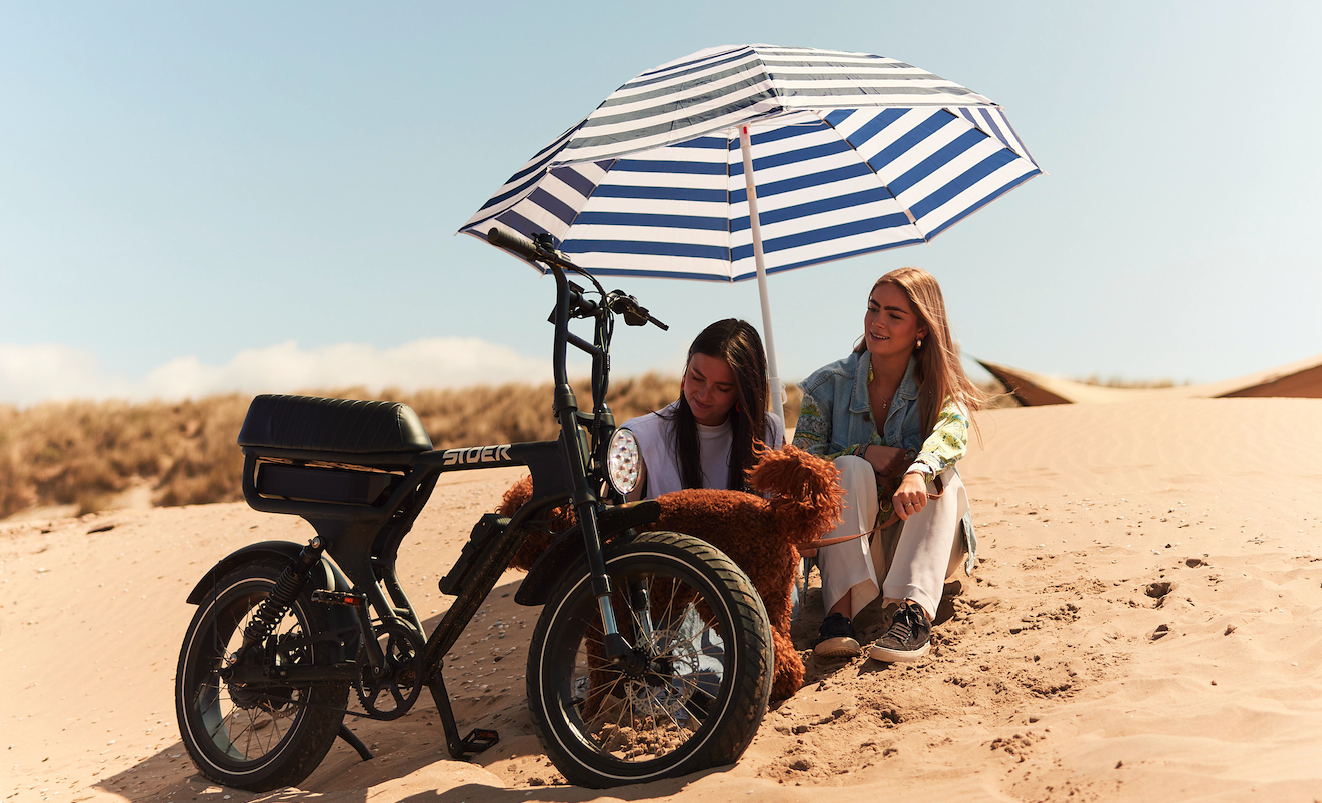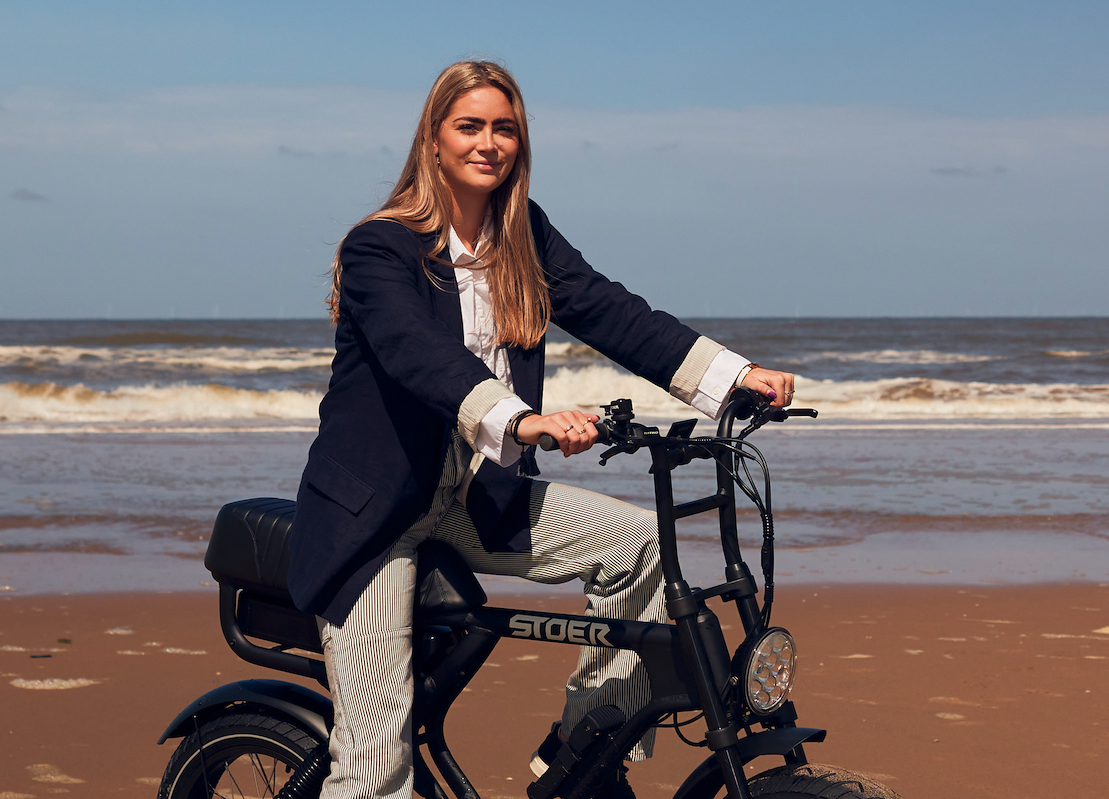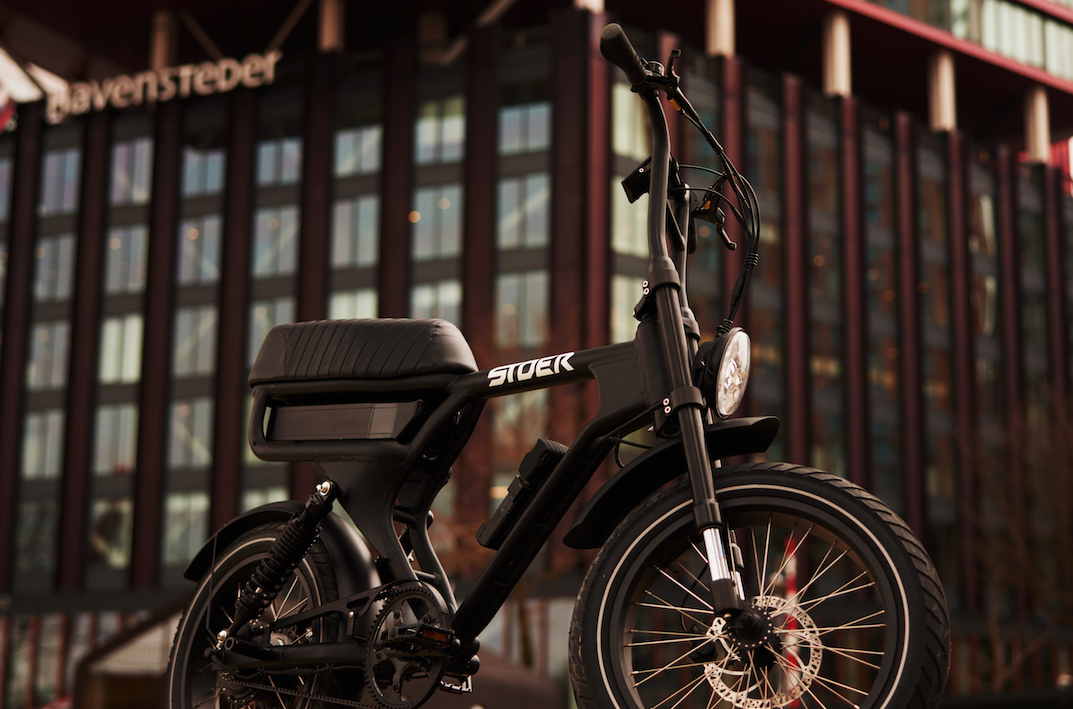Have you ever wondered how to improve your cycling experience while saving time and effort in maintaining your bike? Belt drive is an innovative drive system in cycling that replaces traditional metal chains with durable, flexible belts made from materials such as polyurethane or fiber-reinforced rubber. This system connects the bottom bracket to the rear wheel and allows the transfer of power from the pedals to the wheel. Belt drive is gaining popularity because of several advantages, including the fact that it is virtually maintenance-free. Read on to discover all about the benefits, operation and even regulations surrounding fatbikes.
Fatbike with belt drive
Table of Contents:
- What is belt drive?
- Why belt drive on a bicycle?
- Belt drive versus chain drive
Advantages and disadvantages of both systems - Which bikes use belt drive?
- What additional options on fatbikes?
- Is a fatbike legal in the Netherlands?
Sales and use of fatbikes
Inspection by the Environmental and Transport Inspectorate (ILT). - Article Summary
1. What is belt drive?
Belt drive is a drive system in which the traditional metal chain is replaced by a durable, flexible belt, usually made of polyurethane or rubber with fiber reinforcement. This belt connects the bottom bracket to the rear wheel and transfers power from the pedals to the wheel, causing the bicycle to move. Belt drive is not new, but it is becoming increasingly popular because of its many advantages, including the fact that it is virtually maintenance-free.

2. Why belt drive on a bicycle?
2.1 No lubrication required
One of the most notable advantages of belt drive is the fact that it requires no lubrication. Traditional bicycle chains require regular lubrication to keep them running smoothly and to prevent rust. With belt drive, this time-consuming and sometimes messy maintenance is a thing of the past. This means cyclists don't have to worry about applying oil or grease and their clothes stay clean.
2.2 Durable and low maintenance
Belts are made of materials that are naturally resistant to wear and corrosion. They are resistant to moisture, dirt and mud, making them ideal for all kinds of weather conditions and terrains. Compared to chains, belts maintain their original tension longer and require significantly less maintenance. This means cyclists can spend more time riding and less time cleaning and adjusting their drivetrains.
2.3 Quiet and efficient
Belt drives are also known for their quiet operation. While traditional chains often make noise while pedaling, a belt offers a whisper-quiet ride. In addition, the lower friction of a belt results in more efficient power transfer from the pedals to the rear wheel. This means cyclists can cover greater distances and reach higher speeds with less effort.

3. Belt drive versus chain drive
Belt drive, also known as a belt drive or string drive, is a modern alternative to the traditional bicycle chain. Instead of a metal chain, belt drive uses a strong, durable belt made of materials such as carbon or polyurethane. Here are some advantages of belt drive:
Advantages of belt drive:
- Low maintenance: Belt drive requires little to no lubrication and does not need regular cleaning like a chain. This makes it ideal for cyclists who like a worry-free riding experience.
- Clean and quiet: The belt produces virtually no noise and leaves no oil stains on your clothes, increasing comfort while cycling.
- Durability: Belt drives tend to have a longer life than traditional chains because they are less subject to wear and stretch.
- Lightweight: Belts are often lighter than chains, which can help reduce the overall weight of your bike.
Disadvantages of belt drive:
- Limited variety: Belt drive is not yet as widespread as chain drive, so you may have less choice when it comes to selecting a suitable bike or finding replacement parts.
- Cost: Belt-drive bikes are generally more expensive than comparable chain-drive models.

4. Which bikes use belt drive?
STOER Bikes has belt drive on all their models. With belt drive, they say goodbye to old-fashioned chains and embrace the benefits of durable, efficient and low-maintenance belts.
STOER Bikes' UrbanX is a perfect example of how belt drive can enhance the city cycling experience. This bike combines style and intelligence in one package. With the belt drive, you avoid the hassle of lubrication and chain maintenance, giving you more time to enjoy your ride. The UrbanX offers a great riding experience.

5. What additional options on fatbikes?
Some belt-driven fatbikes come with integrated features that further enhance your cycling experience. These may include:
5.1 GPS and app connect
Allows you to track your bike anywhere and connect to apps for added functionality.
5.2 Immobilization by PIN code
A personal PIN to keep your bike safe.
5.3 High-quality lock
Compact, portable locks for added security.
5.4 LCD Display
On it, you can read important information such as speed and distance during your ride.

6. Is a fatbike legal in the Netherlands?
For fatbikes that are electric and have no characteristics of a normal electric bike, specific rules apply. These rules consider these fatbikes to be two-wheeled motor vehicles, similar to scooters or motorcycles. These rules apply both to those who use the fatbike and those who sell fatbikes.
6.1 Sales and use of fatbikes
It is important to understand that both sellers and users of such fatbikes must comply with the laws and regulations applicable to two-wheeled motor vehicles. This means that sellers must comply with specific regulations and standards when marketing these fatbikes.
6.2 Inspection by the Environmental and Transport Inspectorate (ILT)
The Environmental and Transport Inspectorate (ILT) in the Netherlands conducts inspections of sellers of two-wheeled motor vehicles, including fatbikes without electric features. These inspections are intended to ensure that sellers comply with rules and regulations when offering these vehicles to the public. It is critical that both vendors and users are aware of these rules and regulations to avoid conflict with the law. Compliance with applicable laws is essential to ensure the safety and legal integrity of fatbike use.

7. Summary of the article
Belt drive offers cyclists numerous advantages, including no lubrication required, durability, quiet operation and efficient power transmission. It is a modern alternative to traditional bicycle chains and is becoming increasingly common. Despite some drawbacks, such as limited availability and higher costs, belt drive remains an attractive choice for cyclists who want a low-maintenance and comfortable riding experience. However, it is important to note that in some cases, particularly electric fatbikes in the Netherlands, specific rules and regulations apply to ensure safety and legal integrity. Sellers and users should be aware of these rules to be in compliance with the law.
STOER Bikes and Isey Skyr
Also read about the perfect match between Isey Skyr and STOER Bikes! This collaboration goes beyond products - it's a cool movement for a healthy lifestyle! With awesome TikTok and Instagram actions, we invite you to not only win, but also learn how to take your active and healthy lifestyle to the next level. Don't miss this opportunity to join us on an adventure and challenge yourself. Read more in the article "A healthy collaboration" about STOER and Isey.
Fatbikes in The Hague, Delf and Rotterdam
STOER Bikes has a carefully curated collection of fatbikes ideal for exploring the diversity of The Hague, Delft and Rotterdam. Take a look at our special fatbike selections for The Hague, Delft, and Rotterdam on STOER Bikes for more information. Discover these fascinating cities in a whole new way with a STOER Bike!